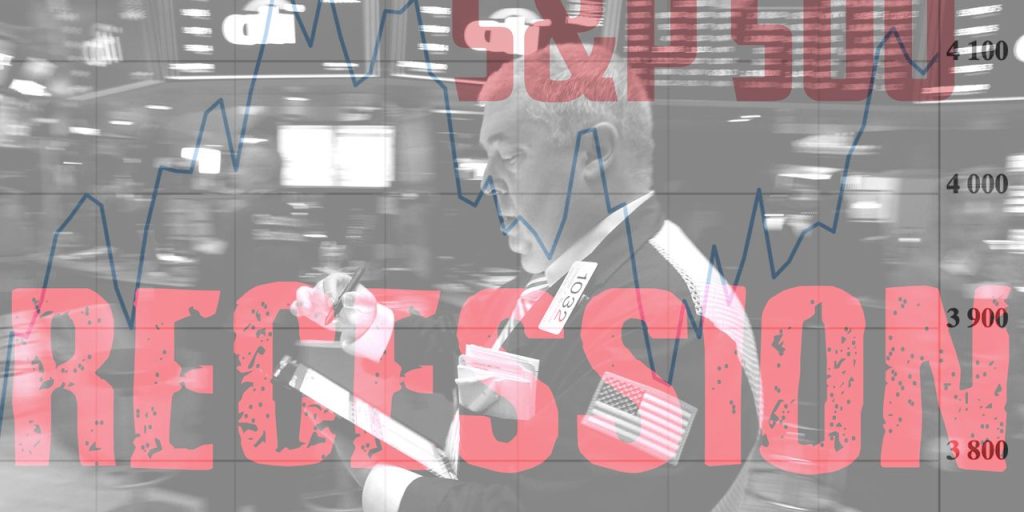Investors are suddenly worried about a potential recession. That means “bad news” on the economy might no longer be “good news” for the stock market.
Until recently, investors welcomed signs of a slowing economy, figuring it meant the Federal Reserve would soon stop raising interest rates, presumably in time to avert a recession as inflation cooled. Following last month’s banking troubles, investors appear more fearful of a potential downturn, market watchers said.
The market has shifted its focus from inflation to recession this year, according to Michele Morra, portfolio manager at Moneyfarm. The recent employment data adds to the growing evidence that inflation is slowing down, “and even if taking into account a more dovish monetary policy, the main focus is recession,” Morra said.
The past week’s data provided fresh evidence that the U.S. central bank’s tightening cycle is finally having an effect on the labor market. While the March job report was strong, as the U.S. added 236,000 jobs, there are some hints that the labor market is softening.
ADP on Wednesday said the private sector added 145,000 jobs in March, well below the 210,000 expected by economists. Jobless claims data on Thursday morning showed first-time applications for benefits last week came in higher than expected.
Investors are waiting for the March consumer price index data to be released on Wednesday and the producer price index data due Thursday.
For economic data, “we believe that slightly bad news is good, but not terrible news,” said Jay Hatfield, chief executive at Infrastructure Capital Advisors. “It is good to extend the labor market weakening song, but there are fears that the economy is going to crash or crack,” Hatfield said in a phone interview.
Stocks have gained so far this year, after a tough 2022. The Dow Jones Industrial Average
DJIA,
+0.01%
has gained 1% year-to-date, while the S&P 500
SPX,
+0.36%
was up 6.9% over the same period. The Nasdaq Composite
COMP,
+0.76%,
which has been leading 2023 gains, has advanced 15.5% so far this year.
But there are doubts about the rally’s sustainability.
On Thursday, the S&P 500 and the Nasdaq Composite booked their first losing week in four, while the Dow Jones Industrial Average gained a modest 0.6% in holiday-shortened trading. The stock market was closed Friday for the Good Friday holiday though stock index futures posted small gains in a shortened trading session following the release of the March jobs report.
“I think we’re probably in a range-trading environment, while investors and companies try to make up their mind about whether they need to be defensive or not,” said Andrew Bell, chief executive at Witan Investment Trust.
Market participants aren’t quite sure whether the Fed is done raising rates, he said, while it’s unclear whether the economy is headed for recession and whether there will be a need to “take a knife” to earnings estimates in coming weeks, Bell said, in a phone interview. First-quarter corporate earnings reporting season kicks off later this week.
For the past few weeks, the S&P 500 has been trading close to the top of its recent trading range of 3,800 to 4,200, so it’s normal to have pullbacks, said Infrastructure Capital’s Hatfield. However, as companies begin to report their earnings for the first quarter, it could set the S&P 500 up for a breakout above the 4,200 level, Hatfield said.
“We think most earnings will be good,” Hatfield said. The U.S. economy is still relatively strong with no significant unemployment, while it would be easier for companies to beat expectations as some analysts have “gotten super bearish,” Hatfield added.
Analysts cut their outlook pretty aggressively during the first quarter as the economic outlook deteriorated. Operating profits are expected to have shrunk by 6.8% last quarter, according to an average of Wall Street forecasts compiled by FactSet.
If the forecast comes true, it would mark the worst quarterly contraction for earnings since the third quarter of 2020, when corporate profits went down by more than 30%, as global lockdowns in response to Covid-19 shook up the economy.
Read: 4 things could shield stocks as Goldman warns of worst earnings season since pandemic
Investors will also pay particular attention to banks, which will be among the first batches to report their earnings, as some, including JPMorgan Chase & Co. chief executive Jamie Dimon warned that the banking crisis is not over.
Still, it might be too early to see the banking crisis reflected in the earnings reports for the first quarter, noted Morra.
Some are less optimistic about the upcoming earnings and the stock market performance.
“After Q4’s negative 3.5% growth, we were halfway to what’s called an ‘earnings recession’ (two consecutive quarters of negative growth), and if Q1 posts a negative result we’ll have fully checked the box,” according to Liz Young, head of investment strategy at SoFi.
The bear market for the S&P 500 isn’t over, and new lows may lie ahead, she said.
“I still believe we could see a pullback that results in a peak-to-trough decline in the S&P of 30% or more,” according to Young. It means that the stock index could reach a low of 3,357 from its peak at 4,796 on January 3, 2022.
“Since we’ll have the verdict on a possible earnings recession in less two months, that would tell whether we’re ripe for a market pullback to begin sooner rather than later,” Young said.
Read the full article here



